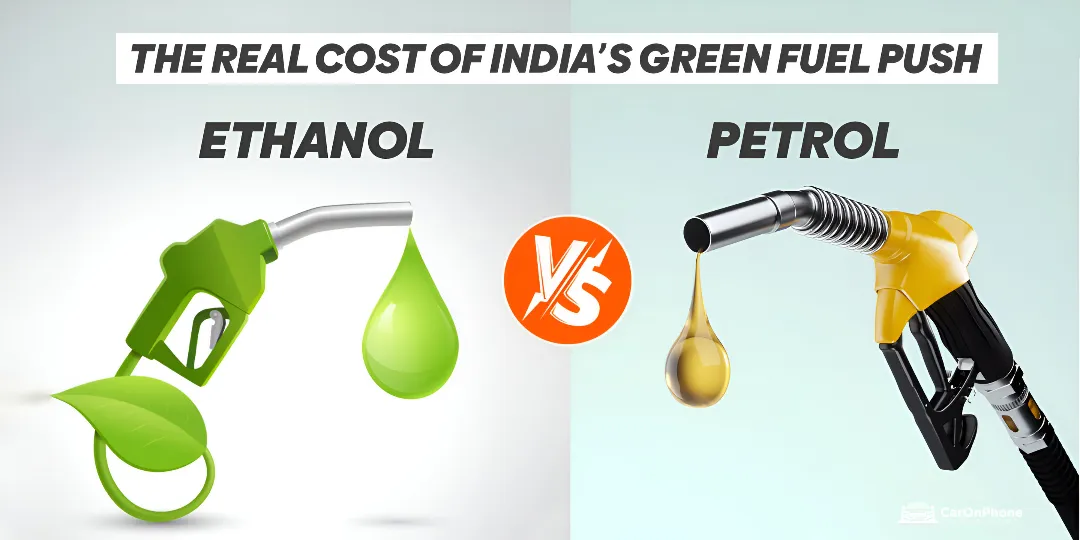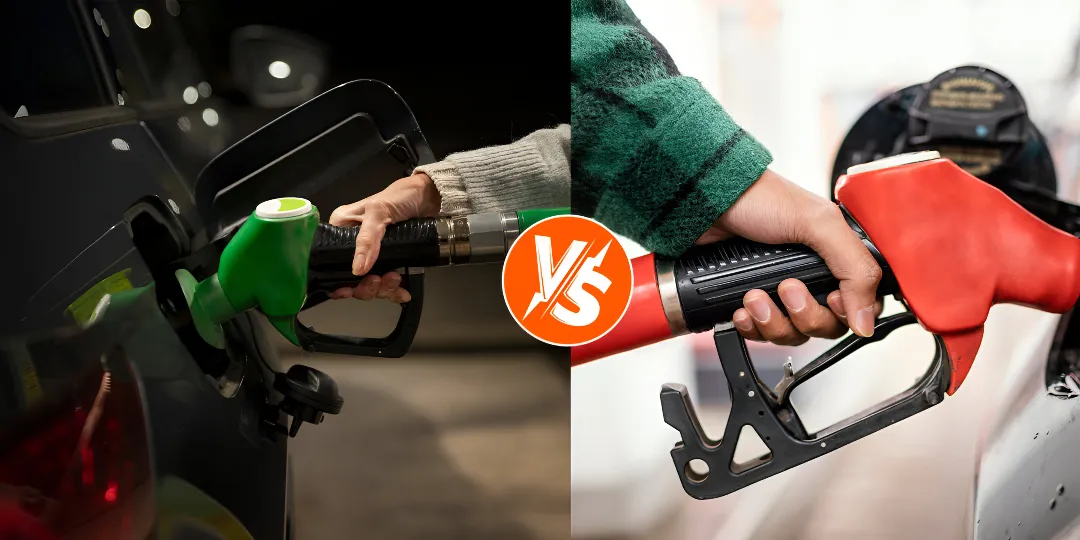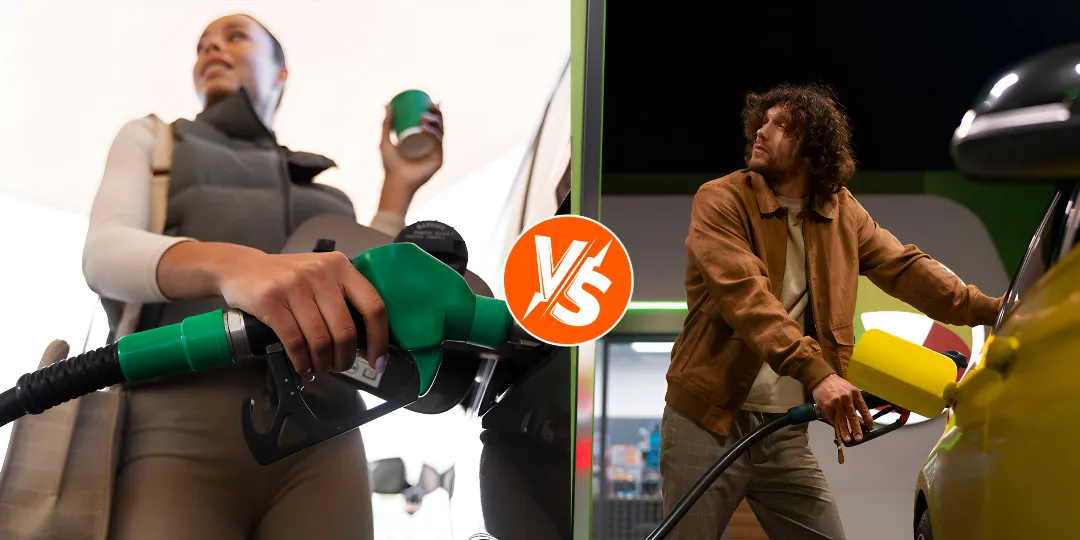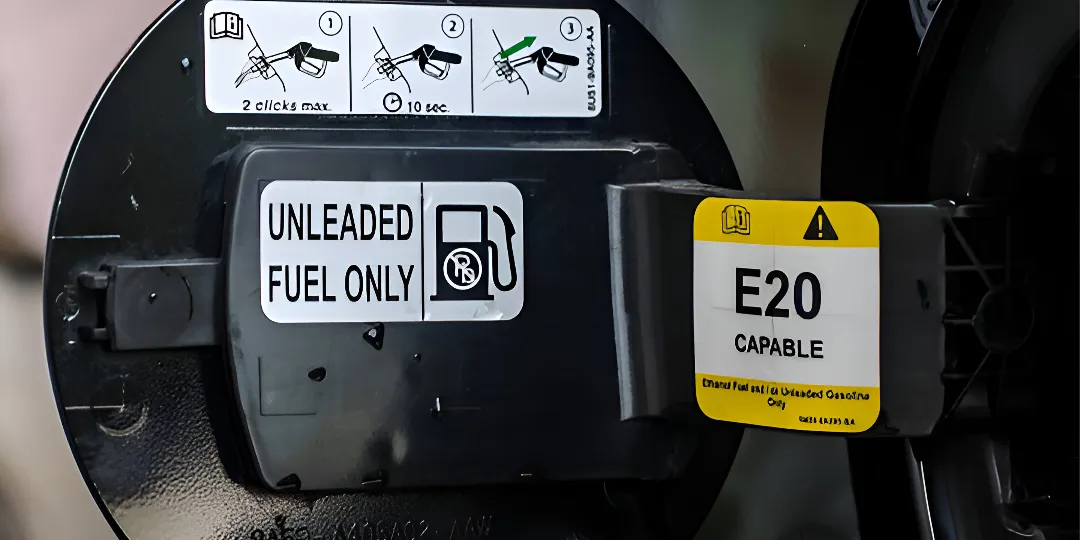
India’s fuel conversation is getting loud, and for good reason. Ethanol vs Petrol is no longer a spec-sheet argument. It’s actually showing up in monthly budgets and car behavior on the road.
If you have doubts about price, mileage, and long-term costs, you’re not alone. This blog will help differentiate the signal from the noise.
India’s ethanol‑blending policy is moving faster than public awareness. Yes, E20 fuel promises cleaner emissions and reduced oil imports. But that doesn’t mean all vehicles (or their warranties) are ready for it.
You’ll also have to consider higher procurement costs, possible mileage dips, and corrosion concerns in older engines. Now you’ve got a blend of environmental ambition and everyday ownership risks that drivers can’t afford to ignore.

Here’s the honest picture. Ethanol’s procurement cost for oil companies has climbed above base petrol.
Short answer that matters to your wallet: not automatically.
Ethanol has lower energy content than petrol, which can trim mileage. Independent benchmarks cited by the Oil Ministry note that E20 can reduce fuel economy by about 6% versus pure petrol.
Then again, the ministry also stresses that the real-world drop is marginal in E20-ready vehicles, since driving style, maintenance, tire pressure, and AC usage sway results too.
If your car is calibrated for E20, per-kilometer fuel spend may stay close. If it is older or E10-tuned, you might notice the ethanol vs petrol mileage gap more clearly.
There is a twist! Ethanol-blended fuel carries a higher effective octane, and that can improve throttle response in vehicles tuned for it.
The Petroleum Ministry cites better acceleration in E20-ready cars, thanks to higher octane and cooling of the intake charge, which can lift volumetric efficiency.
Justas important, on the climate side… The government says E20 slashes tailpipe carbon emissions by approx. 30%, as opposed to E10 in compatible vehicles. They also state how life-cycle studies suggest sugarcane-based ethanol being able to lower greenhouse gas emissions by about 65% compared to petrol. Maize-based ethanol comes to around 50% lower.
So ethanol vs petrol efficiency is clearly a trade-off. There’s a small mileage dip, potentially better response, and a distinctly meaningful emissions benefit.

Older engines and fuel systems may not love higher blends, to be honest.
That said, the ministry calls such fear-mongering misplaced, clarifies insurance is not impacted by using E20, and notes that any parts replacement in older vehicles is minor and handled during routine servicing.
Also, some models have been E20-compatible for years! If you are concerned and your car is not E20-ready, you could use regular E10 where available or switch to premium E0. Just remember that the ₹160-per-litre bracket dramatically changes your running cost.
If your owner’s manual doesn’t list E20 as approved, using it can give manufacturers grounds to deny warranty claims.
Some brands, like Toyota, have explicitly said damage from non‑recommended fuel won’t be covered. Others are more flexible, but none want the liability for engines designed for E10 or lower.
If your car isn’t E20‑ready, keep records of what you’re fuelling with, and know the risk before you fill up.

A quick check can save you a world of grief. Here are key pointers worth remembering:
A resounding yes! Ethanol is both hygroscopic and a solvent. Here’s what you must know:
In E20‑ready cars, components are built to resist this, but older vehicles are more vulnerable.
Zoom out for a second…
Ethanol procurement has become costlier than base petrol, which is why the ministry has ruled out cheaper pump pricing for blended fuel right now, but it is sticking with the program for strategic reasons.
[India and ethanol future; patriotic; independence day style but with cars and happy families, clean future]
Direct answer to the big question “is ethanol cheaper than petrol?” It is not cheaper at the pump today, and per-kilometer cost depends on your vehicle’s compatibility and maintenance habits. For many newer cars, ethanol vs petrol cost stays close. For older cars, expect a modest uptick in fuel or maintenance spend, unless you opt for pricey E03.
CarOnPhone is your one-stop destination to see all upcoming cars, latest cars, released cars, and EV Cars, and compare Cars in all Car Brands. Stay tuned and follow us to update yourself on the automotive world.

